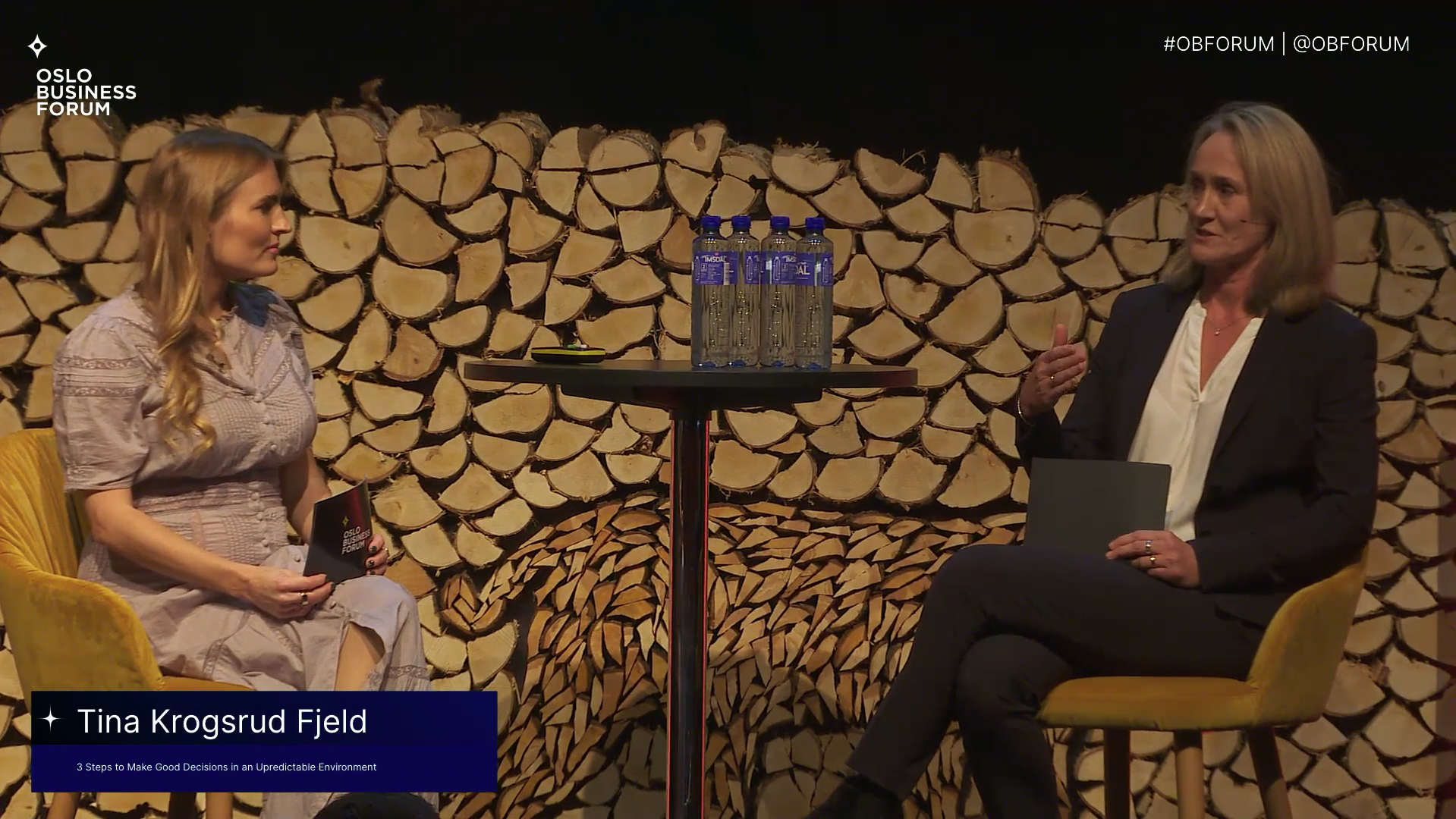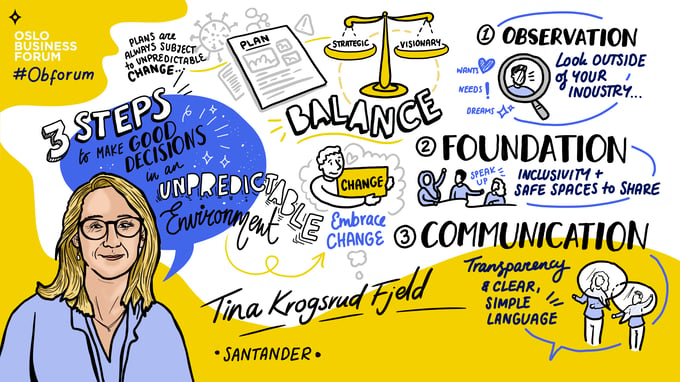Tina Krogsrud Fjeld is the Chief Technology & Operations Officer for Santander Nordics. With more than 25 years of experience in financial services, she leads operations, information technology, data management, and cyber security.
At Oslo Business Forum, Tina sat down to discuss how to make good decisions at unpredictable moments.
Decision-Making in Uncertainty
Unpredictable. It’s a word that has long marked business, even prior to the complexities brought on by a global pandemic, increased social and political unrest, and struggling economies. Although despite ever-present challenges, many leaders continue to struggle with decision-making in uncertainty.
Tina described what we’ve all experienced: “You have a plan, a picture of how the future is going to be. And then comes something completely different that you need to address and prioritize.”
Given the speed of change today, business leaders are even more conscious of the speed of decisions—and how much faster they must be. “It is something we need to help our teams manage, and it requires balance,” said Tina.
"The speed of decisions is a key takeaway that needs attention."
So, how do leaders balance short-term, everyday thinking with long-term strategic planning? Tina believes it requires both willingness and capability to embrace change. “It’s a combination of attitude and structure,” she said.
Tina offered leaders three critical steps for strengthening their decision-making in today’s complex and uncertain business environment.

Three Steps for Better Decision-Making
Tina thinks of the decision-making capabilities that leaders need in three buckets:
- Observation allows leaders to gain insight and perspective from internal and external sources. “This is about really, truly understanding what the question is. It’s outside-in thinking,” said Tina. Striking a balance between internal and external considerations enables leaders to make better-informed decisions.
- Foundation allows leaders to build and earn trust, creating a structure for a common vision and aligned goals. “This is about creating an atmosphere where people trust each other and about us as leaders trusting that employees can make the decisions closest to the problem,” said Tina.
She believes giving voice is critical to building trust and encourages leaders to create a culture in which people are comfortable speaking up. “In rapid change, if you engage the entire organization, you’ll get a lot of ideas and be better equipped to deal with what’s coming from the outside,” she said. - Communication allows leaders to create greater clarity and transparency. “If we want to make better decisions, we need to be crisper in our communication,” said Tina. “Simple language is key, and along with that comes full transparency.” As leaders, we have a responsibility to share information and be clear about challenges and opportunities. Doing so creates greater trust, alignment, and structure for decision-making.
- Make sure the organization “looks out the window” on a continuous basis.
- Make sure there is a foundation of trust, building personal relationships and engagement to help others succeed.
- Recognize the importance of communication and treat information as the strategic asset it is.
Key Points
- Observation, foundation, and communication are three elements that are crucial to good decision-making.
- Observation allows leaders to gain insight and perspective from internal and external sources.
- Foundation allows leaders to build and earn trust, creating a structure for a common vision and aligned goals.
- Communication allows leaders to create greater clarity and transparency.
Questions to Consider
- How often do you “look out the window” to seek insights and inspiration from outside your organization?
- How diverse is your organization, and is there a feeling that people can speak up?
- What have you done to create a common vision and align goals and objectives across your team? With the broader organization?
- Are you crisp in your communication to facilitate faster and easier decision-making?
- Are you transparent in sharing challenges and opportunities to engage your team in decision-making?

Want to be a part of the OBF community? Join Oslo Business Forum 2023: Thriving in Chaos now!.png?width=680&name=CTA_2023%20(2).png)